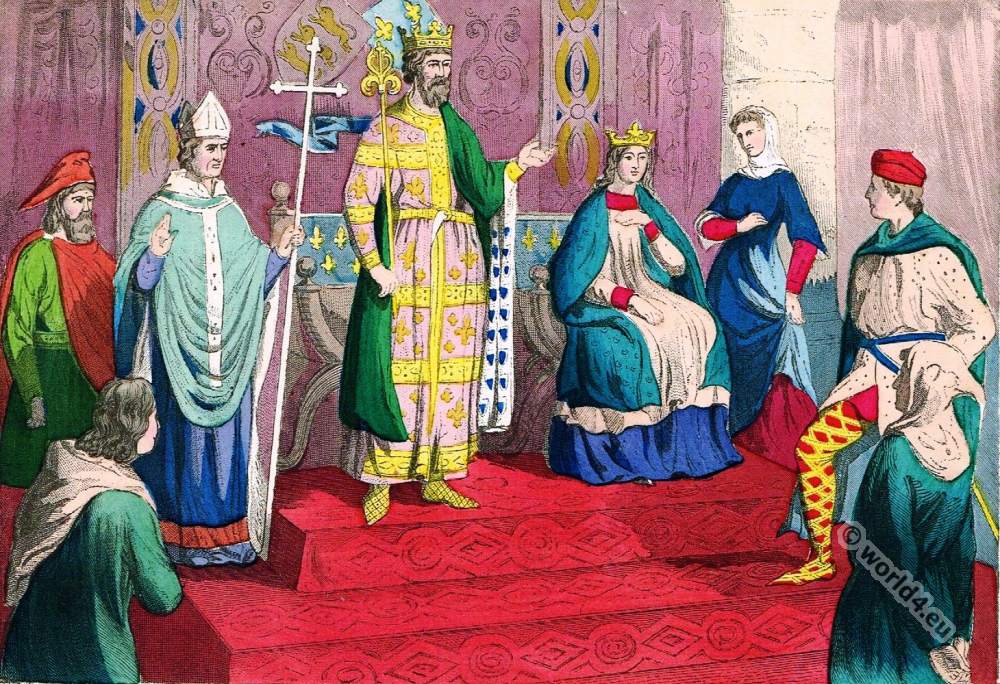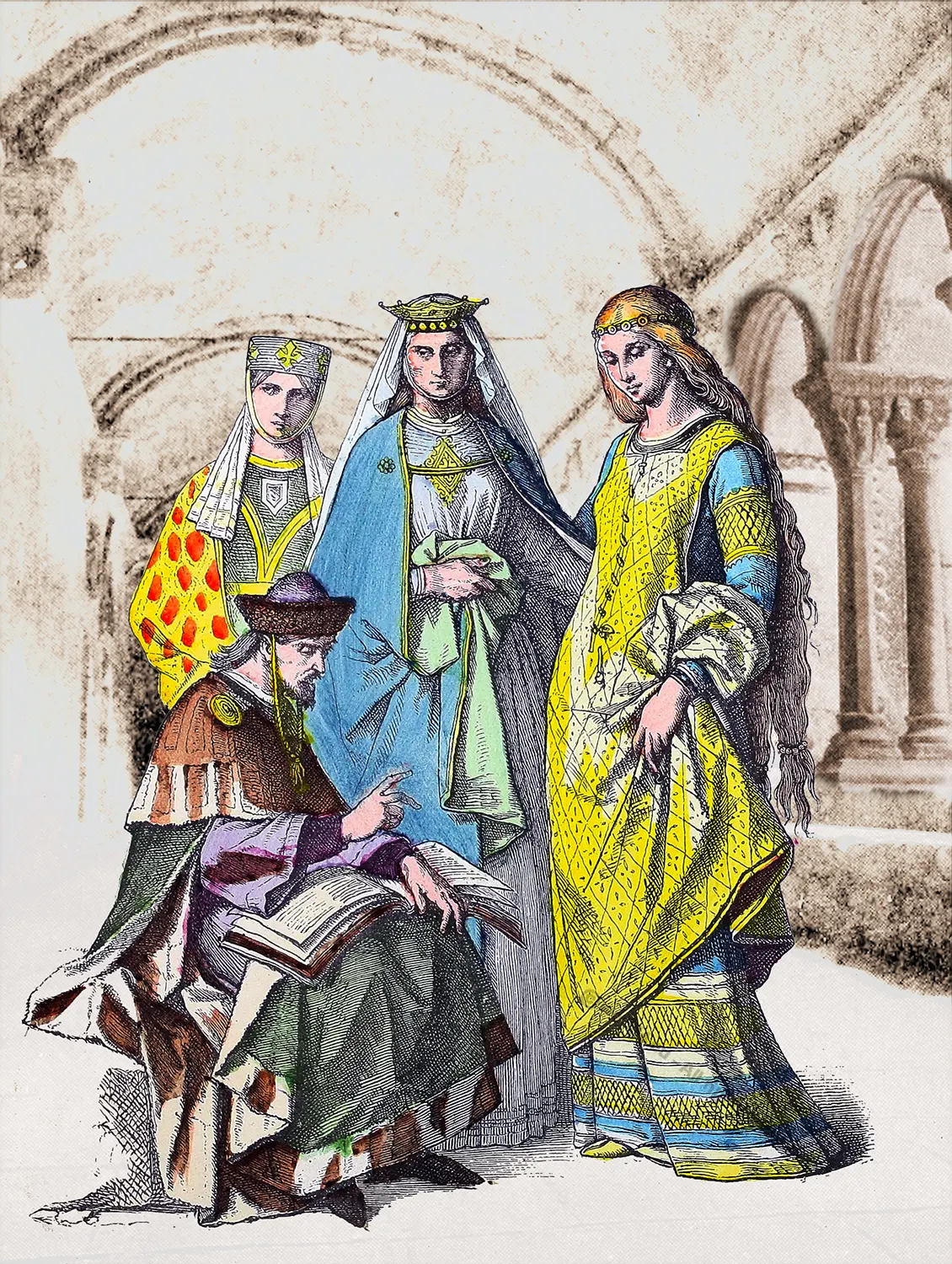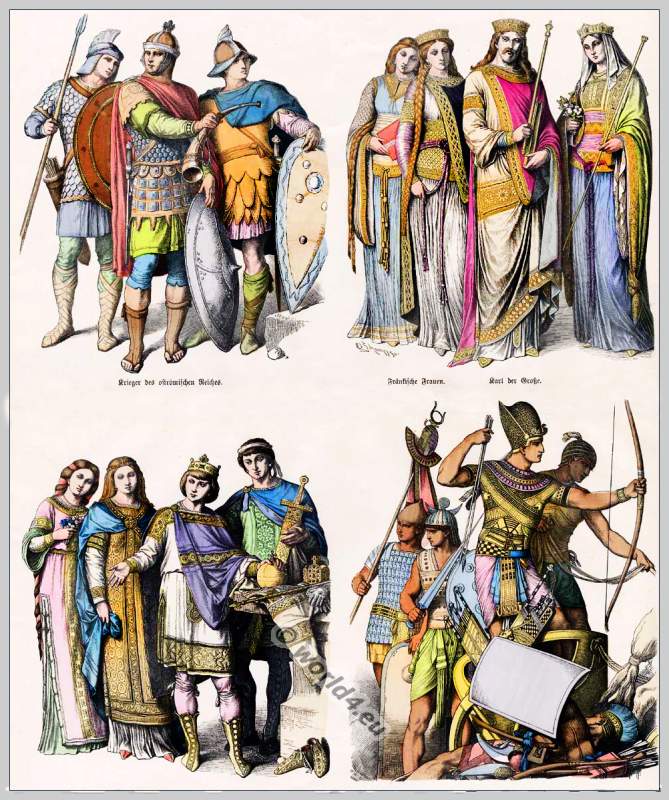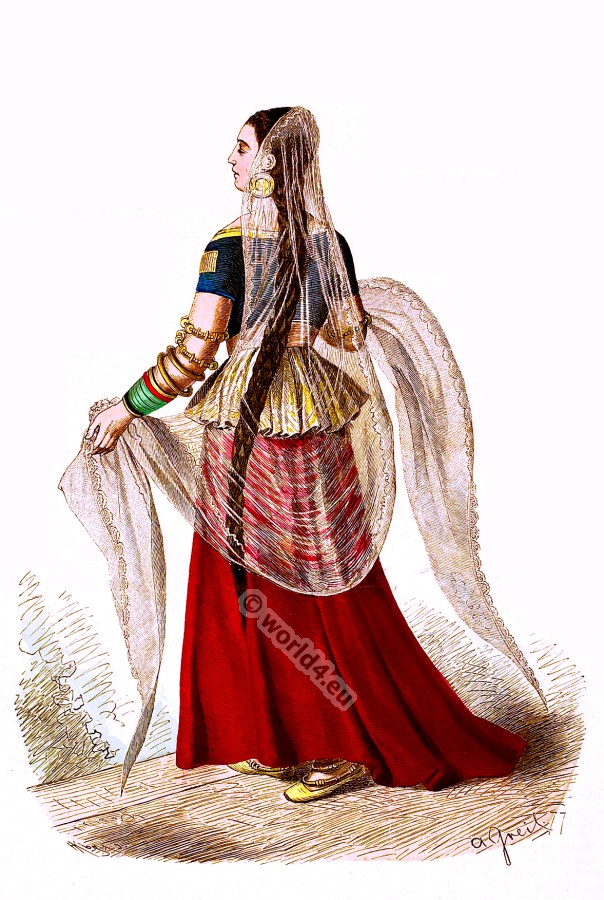
Noble Franconian women.
The history of costumes. Twenty-ninth arch. X. Century. Illustration by A. Müller. Munich picture sheet no. 592.
The dress of the women was strongly influenced by the Byzantine clothing. The Roman era in women’s clothing was based on ancient greece models.
The costumes were inspired by the tunic, which was decorated very expensive (nobility). It was worn without a belt and reached to the ankles. The women in the picture wearing the tunic as the upper and lower garment, the garment is shorter and ends with wide sleeves called a tablion. They were called cap sleeves, because the tip reached to the knees. It covers the entire arm. The noble women wore flat bonnets on a “Byzantine” is cloth that characterized the woman as being married. Unmarried women wore her hair loose, as a braid or a simple knot.
This headscarf played an important role and has been carefully designed. It was fixed by a headband, and on the breast with a brooch held together tightly so that it flowed around the chin. Until well into the 12th century, it remained fixed part of the female wardrobe. The decorative art of the Frankish, Germanic peoples at that time was already highly developed. Correspondingly was the jewelry such as earrings, bracelets and very valuable work for the nobility often artfully crafted from gold and precious stones. In this feudal era marked the position of the clothes the people. The material generally used linen and wool. The farmers were required by law as a dark fabrics, as written in the Chronicle Charlemagne the Great, is now evident that they differ from the nobles. At high levels, such as the nobility, the clothing was next to linen and wool, silk and brocade.
The manufacture of clothing was still in the house itself. Only with the rise of craft production in Germany joined together for the craftsmen’ guilds, the manufacture of clothing to the new guild of tailors was passed.
Until then, there were separate rooms in a stately home where the lady of the house, the servants in the manufacture of clothing, wool spinning, weaving of fabrics, to the embroidering of the sewn clothes, supervised.
Source: The history of costumes. Twenty-ninth arch. X. Century. Illustration by A. Müller. Munich picture sheet no. 592. The history of costumes. Published by Braun & Schneider. Royal court and university book printing house of Dr. C. Wolf & Sohn in Munich.
Related
Discover more from World4 Costume Culture History
Subscribe to get the latest posts sent to your email.





